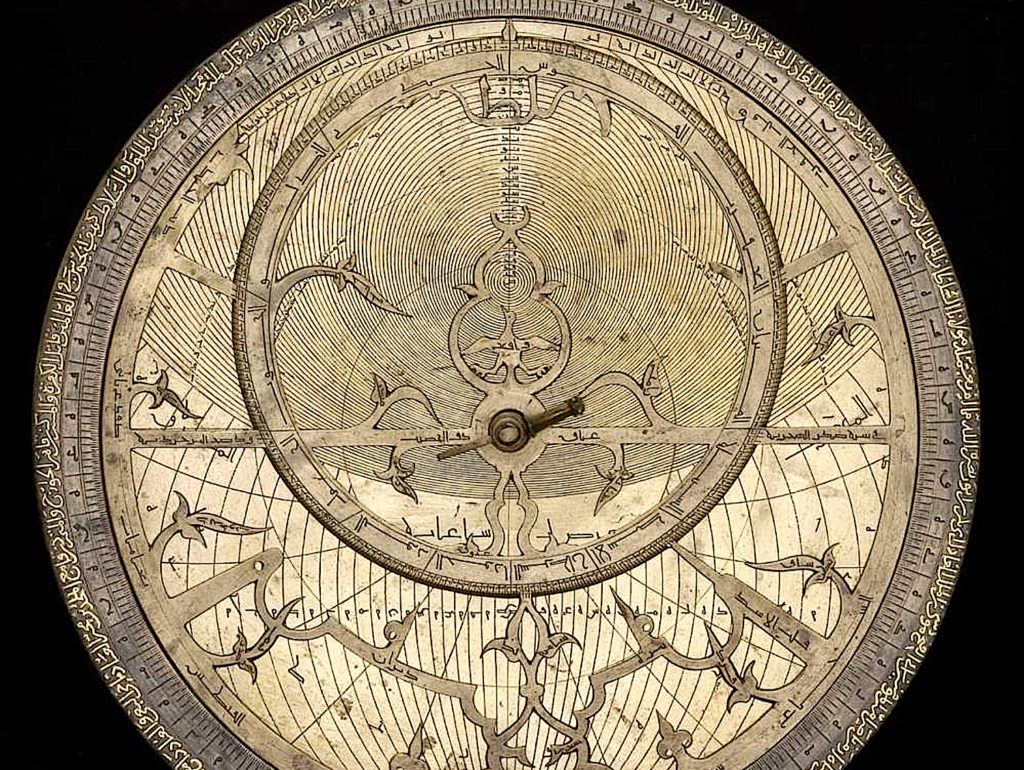Run, don’t walk, to “Lumen: The Art and Science of Light” at the Getty through Dec. 8. You could easily spend the whole day contemplating this beautifully curated, fascinatingly thought-provoking exhibit.
“Lumen” is part of the “PST ART: Art and Science Collide” series currently mounted at various sites around LA. Special installations by Pasadena-based Helen Pashgian and Charles Ross, both artists who explore light and space, extend “Lumen” throughout the museum.
An essay entitled “A Curatorial Perspective on Two Objects” sets the tone:
“To be human is to crave light. We rise and sleep according to the rhythms of the sun, and have long associated light with divinity. Focusing on the arts of western Europe, ‘Lumen’ explores the ways in which the science of light was studied by Christian, Jewish, and Muslim philosophers, theologians, and artists during the ‘long Middle Ages’ (800-1600 CE). Natural philosophy (the study of the physical universe) served as the connective thread for diverse cultures across Europe and the Mediterranean, uniting scholars who inherited, translated, and improved upon a common foundation of ancient Greek scholarship.”
In darkened galleries the spot-lit cases — and the objects within, many of them gold or with gold touches — shine like jewels.
In the Middle Ages, both political and religious power depended heavily upon knowledge of the heavens. Baghdad was a center of medieval astronomy in the eighth and ninth centuries. At magnificent observatories in Damascus, Tabriz, and Samarkand, scholars used Indian trigonometry and mathematical knowledge derived from the ancient Greeks to broaden their understanding of the cosmos.
This learning from the Islamic world spread through present-day Spain and Portugal, forming the basis of an exchange that profoundly affected European science.
Astrolabes, the oldest completely geared mechanisms in the world, were intricate, exquisitely crafted objects consisting of interchangeable plates engraved with representations of the curved circumference of the earth and the dome of the heavens. Such instruments enabled astronomers to map the stars, monks to order hours of prayer, and scientists to locate their precise position on the globe (see video).
The approximately 15-foot-26 “Tapestry of the Astrolabes,” made in Flanders (Belgium) around 1400-1450, was installed at the cathedral in Toledo, Spain, a center of learning and science. God, the mover of the sun and stars, radiates light from within the rete (a pierced movable plate containing the astrolabe’s star map) while an angel turns the rete’s crank.
A volvelle or wheel chart is a paper construction slide chart with rotating parts, again traceable to the Arab world, that is considered an early example of the analog computer. Completely apart from the science, the almost unbelievable detail, attention, and craft render these stand-alone works of art.
A page from Hildegard of Bingen’s “Book of Divine Works” — “On the Construction of the World” — records her vision of the human body as the center of the universe. Enwombed within nested spheres, the human being is in turn “ringed by heavenly bodies, the clouds, and the winds, all encircled by the figure of flaming Caritas, or Divine Love.”
How is the cosmos ordered? medieval scientists and theologians asked. How are we to understand proportion, harmony, and mathematics in the divine creation?
A section called “Light and Vision” reminds us that the medieval world was illuminated solely by oil lamps, fire, and the sun and moon.
Our sense of vision, all-important, was understood to require “prolonged meditation, scrutiny, and ‘attentive eyes.’ ”
Did light come from within us, or without? Because light was believed to travel in lines, geometry became an essential element in these explorations.
You’ll find gorgeous illuminated manuscripts, gilded altarpieces, crystal-encrusted monstrances, and medieval paintings of the Annunciation. Angels, those light-bearing creatures, figure prominently.
Philosophers reflected as well upon the paradox of “divine darkness”: “For now we see through a glass, darkly; but then face to face” (1 Corinthians 13:12).
A Getty-produced accompanying YouTube video called “Hugh of Fouilloy and William of Conches’ De Natura Avium” gives a flavor of the exhibit’s breadth and depth.
Featured is a text, written and compiled in 1277, by scientist-philosophers Hugh of Fouilloy and William of Conches. The lush manuscript, illuminated with lapis and gold, shows some of the ways medieval thinkers explained the natural world, the movement of the planets, and the general way in which the cosmos works. In several sections, including one on birds and a bestiary, along with Scripture-based moral tales, the author explores the confluence between the human and the divine.
That’s a confluence we’ll never fully plumb. We can only grope in the dark, knowing — hoping — that God is Light Incarnate.
As St. Augustine wrote in his “Confessions”:
“It was not ordinary light perceptible to all flesh, nor was it merely something of greater magnitude but still essentially akin, shining more clearly and diffusing itself everywhere by its intensity. No, it was something entirely distinct, something altogether different from all these things; and it did not rest above my mind as oil on the surface of water, nor was it above me as heaven is above earth. This light was above me because it had made me; I was below it because I was created by it. He who has come to know the truth knows this light.”

